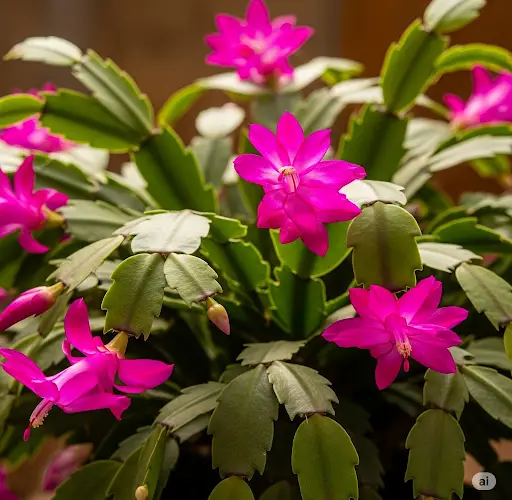The Christmas cactus (Schlumbergera), known for its stunning winter blooms and easygoing nature, is a favorite among indoor plant lovers. Yet, while these plants are typically low maintenance, many owners struggle to coax them into blooming each year. If your Christmas cactus has remained flowerless season after season, there’s good news: a few simple adjustments and one natural nutrient trick can awaken its blooming potential like never before.
This guide will show you exactly how to trigger your Schlumbergera into bloom and keep it flowering longer—with tips that are gentle, affordable, and proven to work even on the most stubborn plants.
Why Isn’t My Christmas Cactus Blooming?
The Christmas cactus isn’t a true cactus—it’s a tropical succulent that evolved in shady, humid forests. Because of this, it needs different care than desert cacti. Failure to bloom is often due to one or more of the following:
-
Too much light or warmth during the pre-bloom phase
-
Irregular watering cycles
-
Lack of dormancy or rest period in early fall
-
Nutrient imbalances, particularly phosphorus deficiency
-
Stress from frequent moving, drafts, or sudden changes in temperature
The plant naturally blooms when it experiences a period of cool temperatures and shorter daylight hours—mimicking its natural winter habitat.
Step-by-Step: Triggering Bloom on a Schlumbergera
To help your Christmas cactus bloom reliably—and more abundantly—follow these steps:
1. Create a Dormancy Period
In late September to early October, reduce watering to only once every 2–3 weeks. Move the plant to a cooler room (13–15°C or 55–60°F) with indirect light. This rest period mimics the plant’s natural cycle and triggers bud development.
2. Limit Light Exposure
Ensure the plant gets at least 12–14 hours of darkness daily for about 3–4 weeks. You can cover it with a box or place it in a dark room overnight. This photoperiod adjustment is critical for bud initiation.
3. Boost with a Natural Fertilizer
Here’s the secret trick: a natural phosphorus-rich feeding that encourages healthy bud formation and vibrant blooms. This can be made using simple kitchen and garden ingredients.
Natural Bloom Booster for Christmas Cactus
You’ll need:
-
1 teaspoon of wood ash or bone meal (for phosphorus)
-
1 teaspoon of brewed black tea leaves or weak chamomile tea (for potassium and trace minerals)
-
1 liter of lukewarm water
Optional: Add a small pinch of Epsom salts (magnesium sulfate) to enhance leaf strength and flower endurance.
How to prepare:
-
Combine the ingredients in a container and mix well.
-
Let the mixture steep for 1–2 hours, then strain out solids.
-
Water your Christmas cactus with about 100–150 ml of this solution once every two weeks during the pre-bloom and bloom period (late October through January).
What to Expect After Application
Within a couple of weeks, small flower buds should begin to appear at the ends of the leaf segments. As you continue care:
-
Buds will swell and eventually open into beautiful pink, red, white, or peach flowers.
-
The plant will maintain healthy green segments, and older stems will firm up.
-
Blooms will stay vibrant longer, sometimes extending into late winter.
Tips for Prolonged and Repeat Blooming
-
Avoid moving the plant once buds form. Shifting light and drafts can cause buds to drop.
-
Maintain moderate temperatures (18–21°C or 64–70°F) once blooming begins.
-
Mist the plant lightly to maintain humidity, especially in heated homes.
-
After blooming, let the plant rest by reducing watering and withholding feedings for 4–6 weeks.
Common Mistakes to Avoid
-
Overwatering: Roots are sensitive to rot. Always use well-draining soil and water when the top inch is dry.
-
Using standard cactus soil: Christmas cacti prefer a rich, moisture-retentive mix with good aeration.
-
Keeping it too warm or too bright before blooming season: It needs cooler, darker conditions to initiate flowering.
-
Feeding with nitrogen-rich fertilizer only: This promotes leaf growth over flowers.
Final Thoughts: Your Christmas Cactus Can Bloom Beautifully
With the right combination of rest, light control, and a touch of natural nutrition, your Christmas cactus can become the centerpiece of your winter indoor garden. This plant has the potential to burst into dozens of bright, tropical-like blooms even in the coldest months.
Give it one spoon of the right feeding, provide a bit of seasonal rhythm, and let nature do the rest. With these methods, even a shy bloomer will surprise you—and might just bloom more spectacularly than ever before.



